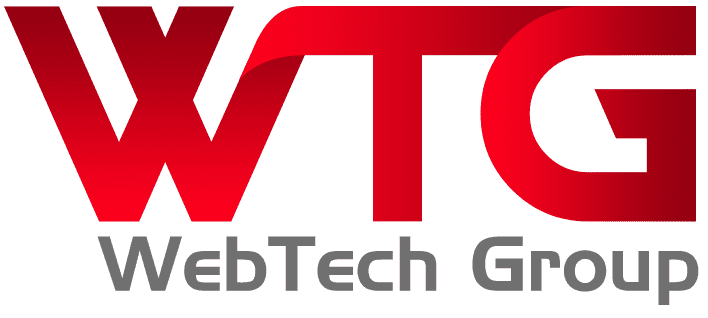
SEO Isn’t Dead—It’s Expanding: How to Win in the Age of AI Answers
ST. LOUIS, MO (StLouisWeb.Design) If you’ve heard “SEO is dead,” you’re hearing the wrong part of the story. What’s dying is the narrow idea that SEO is only about blue links on page one. What’s thriving is findability—being the cited, trusted source wherever people ask questions: in classic Google results, in AI-generated answers, in chat-style assistants, on social search, and in vertical directories. For local businesses and publishers in St. Louis, this shift presents an opportunity—if you adapt your content and technical foundation to cater to both search engines and answer engines.
Key takeaways (TL;DR):
- AI won’t replace Google; it’s becoming part of search. Optimize for both the link list and the answer box.
- Great content still wins, but it needs structure, clarity, and original value to be quoted by AI.
- Mark up your pages with Schema.org so machines recognize entities (people, places, organizations, products).
- Publish first-party facts—data, quotes, photos, and local proof—so you’re the source worth citing.
- Improve UX signals: fast pages, clean headings, and real author bios build trust for humans and algorithms.
- Use a local strategy: service-area pages, accurate business profiles, reviews, photos, and consistent NAP data.
Will AI replace Google Search?
Short answer: no—but it will reshape how results appear and how clicks flow. Search pages are increasingly incorporating AI-generated summaries that attempt to directly answer the query, often accompanied by source links nearby. In many cases, those summaries reduce clicks to generic content while rewarding pages that deliver the clearest, most structured, and most original information. That means the job isn’t just “rank #1”; it’s the page AI wants to quote—and the page humans want to explore after the quick summary.
Think of today’s landscape like a hub. Google remains the biggest hub, but AI chat tools, vertical engines (maps, shopping, travel, recipes), and community Q&A are powerful spokes. You don’t have to dominate every spoke—you need to be discoverable in the places your audience actually checks, and make sure your site provides the evidence that backs up the short AI answer.
What changed (and why SEO sometimes feels dead)
- Zero-click answers are common. When a summary appears, many users gain sufficient context without needing to click. If your content is thin, you’ll “appear without traffic.” The fix: publish quote-ready content that AI wants to reference and that users want to read in full.
- Quality bars are higher. Search systems are better at detecting thin, derivative, or overly templated posts. Sites with helpful, unique content—clear authorship, expertise, and proof—are more resilient.
- Structure matters more. Machines extract answers from clean headings, checklists, FAQs, tables, and definitions. If your pages are walls of text, you’re harder to quote—and easier to skip.
- Authority is multi-source. Backlinks still help, but brand, reputation, and consistency across your local listings, articles, and directories are crucial—especially for service businesses.
None of that spells doom for SEO. It simply means the playbook is broader: classic on-page best practices plus answer-engine optimization.
Great content still wins—if it’s built for humans and machines
Below is a practical framework we use at stlouisweb.design to make content both readable and machine-readable, increasing your odds of being cited in AI summaries and ranking in traditional results.
1) Lead with the answer; then expand
Open with a two–three sentence plain-English answer to the core question. Follow with subheadings that dig deeper. Add a short “Fast Facts” list and FAQs at the end. This format helps users scan and gives AI a clean, high-confidence snippet to quote.
2) Organize by entities, not just keywords
Search and AI care about people, places, products, and organizations—entities. Use clear names (e.g., “Candicci’s Catering & Express, Chesterfield, Missouri”) and consistent spellings. Create pages that map to entities users actually search for: services, neighborhoods, venues, and problems you solve.
3) Add real, first-party evidence
Publish only the things you can: original photos, process shots, menus, pricing tiers, project timelines, case studies, quotes, testimonials, data tables, or before-and-after galleries. First-party signals distinguish you from generic content and make your page more credible and worth citing.
4) Use structured data (Schema.org)
Add Organization, LocalBusiness, Product, Service, FAQPage, HowTo, and NewsArticle markup where appropriate. This helps machines understand your page and increases eligibility for rich results. Include author markup (Person) with bios and expertise for credibility.
5) Improve UX and trust cues
Fast load times, clean typography, one H1, descriptive H2s, scannable bullets, and sensible internal links are table stakes. Add a clear About, Contact, and Editorial/Corrections note for credibility. Keep your publish and update dates accurate and visible.
6) Make a deliberate crawler policy
If you want AI systems to learn from or cite your pages, allow their crawlers in robots.txt. If you don’t, you can restrict them—but know that some answer experiences may still summarize public facts. The strategic choice is yours; we help clients evaluate trade-offs.
A local playbook for St. Louis brands
For area businesses and publishers, you can level up visibility by pairing website improvements with local authority:
- Google Business Profile (GBP): Maintain hours, services, categories, products/menus, and fresh photos. Post updates around seasonal offers (e.g., holiday catering, fall specials).
- Location & Service Pages: Create pages for the neighborhoods and suburbs you actually serve, such as Clayton, Chesterfield, Wildwood, St. Charles, Soulard, and The Hill—each with unique copy, FAQs, and images.
- NAP consistency: Ensure your Name, Address, and Phone number data match across your site, directory listings, and social profiles.
- Reviews strategy: Request reviews with photos and detailed comments; respond to all reviews with specific feedback.
- Local media & directories: Publish explainers, opinion pieces, and announcements that link back to service pages. If you contribute to regional outlets and reputable directories, you build both audience and authority.
For publishers, align coverage with original reporting and local expertise: interviews, data roundups, guides, and explainers tied to the St. Louis region. The more you can be the first source of facts, the more likely you’ll be cited—by humans and machines.
A 12-week implementation plan
Weeks 1–2: Strategy & baseline
- Clarify priority audiences and the questions they ask.
- Inventory existing pages; flag thin/duplicate content to consolidate.
- Define 10–15 high-intent topics (services, “best of” guides, comparisons, neighborhood pages).
Weeks 3–4: Information architecture
- Map each topic to a page with a clear answer-first intro, subheadings, and FAQs.
- Draft internal linking: every page links to 2–3 relevant pages; create a “Resources” or “Learn” hub.
- Plan entity coverage (organizations, neighborhoods, venues) and related Schema types.
Weeks 5–6: Content production
- Write unique, locally grounded copy.
- Add first-party media: photos, short videos, quotes, and a data/stat table where relevant.
- Include a “Fast Facts” box and 3–5 FAQs per page.
Weeks 7–8: Technical & UX
- Implement Schema.org markup; validate.
- Optimize Core Web Vitals: compress images, lazy-load media, and minimize unused scripts.
- Ensure accessibility basics: alt text, readable contrast, and logical headings.
Weeks 9–10: Local authority & distribution
- Update GBP with products/services and fresh images.
- Publish one announcement or guide to a reputable local site or directory and link back to your relevant page.
- Encourage and respond to reviews; embed selected testimonials.
Weeks 11–12: Measurement & iteration
- Track impressions, queries, and CTR for your new pages.
- Watch branded search volume and assisted conversions.
- Expand successful pages with a short case study, gallery, or downloadable checklist.
How StLouisWeb.Design helps you win in the AI + SEO era
We build fast, structured, and story-rich websites that earn visibility in both classic search results and AI answers. Our process combines strategy, clean information architecture, Schema markup, and content that includes original proof—photos, data, and quotes—so your pages are the ones assistants want to cite and people want to bookmark. We also guide local businesses on GBP, reviews, and directory consistency, and we help publishers shape articles that lead with answers and follow with depth.
If you’re ready to move beyond “rankings” and toward omnichannel findability, we’ll craft a plan that fits your goals and your audience.
Additional resources:
- Guest Post on StLouisWeb.Design – $95 – Paid using PayPal ID Dave@StLouisMedia.us
- Guest Post on STL.News



